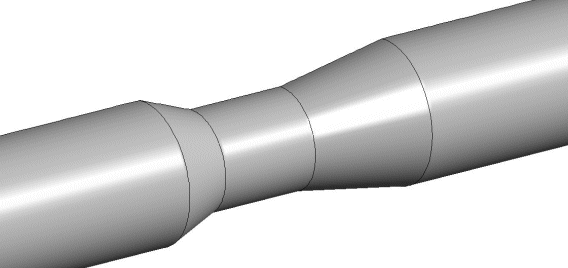Chemical and Process Engineering Resources

Understanding the flow of compressible fluids in pipes is necessary for a robust design of process plants. The main difference between incompressible fluid, like water, and compressible fluid, vapor, is the greater change in pressure and density. This makes the calculations for compressible fluids slightly more difficult. Understanding how the fluid properties change is critical when dealing with these fluids. The ability of compressible fluids, unlike incompressible fluids, to "choke" further complicates matters.
Adiabatic Flow of a Compressible Fluid Through a Conduit
Flow through pipes in a typical plant where line lengths are short, or the pipe is well insulated can be considered adiabatic. A typical situation is a pipe into which gas enters at a given pressure and temperature and flows at a rate determined by the length and diameter of the pipe and downstream pressure. As the line gets longer friction losses increase and the following occurs:
- Pressure decreases
- Density decreases
- Velocity increases
- Enthalpy decreases
- Entropy increases
The question is "will the velocity continue to increasing until it crosses the sonic barrier?" The answer is NO. The maximum velocity always occurs at the end of the pipe and continues to increase as the pressure drops until reaching Mach 1. The velocity cannot cross the sonic barrier in adiabatic flow through a conduit of constant cross section. If an effort is made to decrease downstream pressure further, the velocity, pressure, temperature and density remain constant at the end of the pipe corresponding to Mach 1 conditions. The excess pressure drop is dissipated by shock waves at the pipe exit due to sudden expansion. If the line length is increased to drop the pressure further the mass flux decreases, so that Mach 1 is maintained at the end of the pipe.
Analyzing the adiabatic flow using energy and mass balance yields the following analyses along with this nomenclature:
| Variable | Definition | Variable | Definition |
| h | enthalpy/unit mass | hst | stagnation enthalpy |
| v | velocity | Ma | Mach number |
| g | gravitational constant | M | molecular weight |
| z | elevation | T | temperature |
| Q | heat flow | P | pressure |
| Ws | shaft work | R | gas constant |
| Cp | specific heat (constant pressure) | Z | compressibility |
| r | density | g | Cp/Cv |
| G | mass flux | Â | Â |

 FB
FB



0 Comments